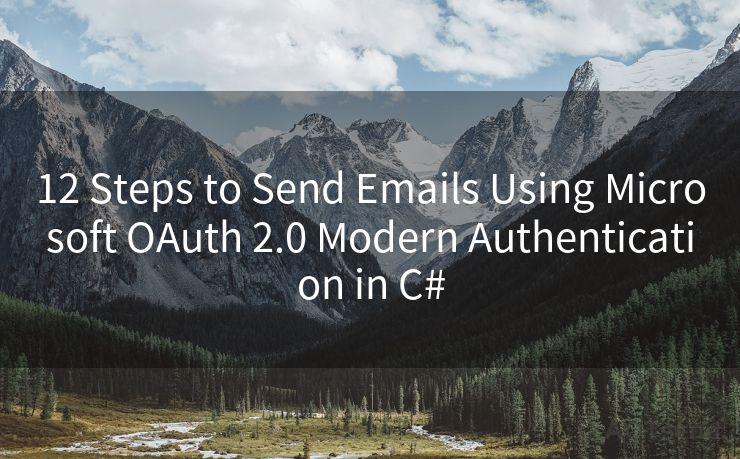12 Steps to Send Emails Using Microsoft OAuth 2.0 Modern Authentication in C#




When it comes to sending emails using Microsoft OAuth 2.0 Modern Authentication in C#, there are specific steps you need to follow to ensure secure and efficient communication. In this blog post, we'll outline the 12 key steps to achieve this, guiding you through the process from start to finish.
Step 1: Understanding OAuth 2.0 and Modern Authentication
OAuth 2.0 is an authorization framework that enables applications to obtain limited access to user accounts on an HTTP service, such as Microsoft 365. Modern Authentication refers to a set of security protocols that use OAuth 2.0 for authentication and authorization.
Step 2: Setting Up Your Development Environment
Before you begin, ensure your development environment is set up correctly. This includes installing the necessary SDKs, such as the .NET Framework, and setting up your IDE (Integrated Development Environment), like Visual Studio.
Step 3: Registering Your Application
You need to register your application with Microsoft Azure to obtain the necessary credentials for OAuth 2.0 authentication. This involves creating an app registration in the Azure portal and noting down the Application (client) ID and Directory (tenant) ID.
Step 4: Configuring Your Application
Configure your C# application to use the registered application's credentials. This typically involves setting up the authentication context, redirect URIs, and scopes for the permissions your app requires.

Step 5: Initiating the OAuth 2.0 Flow
Implement the OAuth 2.0 authorization code flow in your C# application. This involves redirecting the user to the Microsoft login page, where they can authenticate and authorize your application to access their account.
Step 6: Handling the Authentication Response
Once the user authenticates, Microsoft will redirect them back to your application with an authorization code. Your application needs to handle this response, exchange the code for an access token, and store it securely.
Step 7: Using the Access Token
With the access token, your application can now access the user's Microsoft account resources, including their email. Use the Microsoft Graph API to send emails on behalf of the user.
Step 8: Crafting the Email Message
Construct the email message you want to send, including the recipient, subject, body, and any attachments. Format the message according to the requirements of the Microsoft Graph API.
Step 9: Making the API Call
Using the access token obtained in Step 6, make an HTTP request to the Microsoft Graph API endpoint to send the email. Ensure the request follows the correct syntax and includes all necessary headers and payload.
Step 10: Handling Responses and Errors
Your application should be able to handle responses from the Microsoft Graph API, including success messages and error codes. Implement appropriate error handling mechanisms to manage potential issues during the email sending process.
Step 11: Testing and Debugging
Thoroughly test your application to ensure it can successfully send emails using OAuth 2.0 Modern Authentication. Debug any issues that arise and refine your code accordingly.
Step 12: Deploying and Monitoring
Once your application is ready, deploy it to a production environment and monitor its performance. Regularly check for any errors or issues and address them promptly to maintain a reliable email sending service.
By following these 12 steps, you can successfully implement Microsoft OAuth 2.0 Modern Authentication in your C# application to send emails securely and efficiently. Remember to keep your application up to date with the latest security practices and Microsoft Graph API updates to ensure optimal performance and security.
🔔🔔🔔
【AOTsend Email API】:AOTsend is a Managed Email Service for sending transactional emails. Support Email Types: reminders, authentication, confirmations, notifications, verification codes, invoices, password resets, account activations, billing statements, two-factor authentication (2FA), and one-time passwords (OTP) emails, etc. $0.28 per 1000 Emails. 99% Delivery, 98% Inbox Rate.
You might be interested in:
Why did we start the AOTsend project, Brand Story?
What is a Managed Email API, How it Works?
Best 25+ Email Marketing Platforms (Authority,Keywords&Traffic Comparison)
Best 24+ Email Marketing Service (Price, Pros&Cons Comparison)
Email APIs vs SMTP: How they Works, Any Difference?




Scan the QR code to access on your mobile device.
Copyright notice: This article is published by AotSend. Reproduction requires attribution.
Article Link:https://www.mailwot.com/p3738.html



